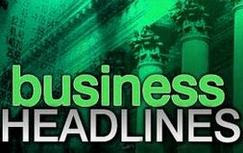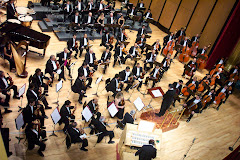DANCES WITH WOLVES - 1990
The stunning soundtrack reflecting the courageous life of Lieutenant John Dunbar, who having been sent to a remote outpost in the wilderness of the Dakota territory during the American Civil War, befriends and saves the local Sioux tribe.
The stunning soundtrack reflecting the courageous life of Lieutenant John Dunbar, who having been sent to a remote outpost in the wilderness of the Dakota territory during the American Civil War, befriends and saves the local Sioux tribe.
John Barry composed the Award-winning score, which became an international hit. Pope John Paul II once referred to it as among his favorite pieces of music.
In fact,it is one of the most emotionally charged soundtrack I have ever heard due to the use of realistic string sounds which are really outstanding in sound quality and composition.
That said, Dances With Wolves was a simple, yet classic score by any standard of the imagination, and is still recognized as such today.
Three main themes --all of which memorable-- are combined to make a powerful, yet tender and epic score.
Like all of John Barry's more recent scores, there are outstandingly lush themes - but unlike the usual one or two, there are perhaps half a dozen here, all equally good.
The titular character's John Dunbar theme is undoubtedly the best known; instantly recognisable, the theme is noble, elegant and sincere.
Add to this themes for Two Socks the Wolf, the gorgeous, but naturally understated love theme as well as numerous other themes and ideas.

"Dances With Wolves" would not have been nearly so great a movie as it turned out to be if not for the score of John Barry.
Sure, even with a mediocre soundtrack, it still would have been a very good movie. But, it would not have been great.

The soundtrack to this movie is much more than just the "finishing touch."
Rather, it forms the very pillars and beams on which the film is built.
Famous for his music in James Bond movies, Barry here stirs the imagination with his moving "John Dunbar Theme" and leaves you breathless with the accompaniment to the Buffalo hunt.
This soundtrack is so very well done and such pleasant listening that I would even suggest it to people who have never seen the movie.
Of course, I would also urge people to view the film as well - either

beore or after they listen to the soundtrack. This one earned a well deserved Academy award for the score.
This wealth of material ensures that each incident stands memorably on its own, but of course fitting ideally with the material around it.
This kind of musical storytelling isn't really a usual Barry trait, but works superbly well here.
Although there is a noble glow to much of the music, the opening reveals a starkly mysterious choir to begin in ghostly style, before melting away into the haunting trains of the John Dunbar theme.
The percussive Pawnee attacks are another striking contrast and the off kilter drum motif takes a little getting used to.
However, the travelling music mirrors the splendour of the land and are all given differing treatments.
The Journey to Fort Sedgewick features an inverted version of the John Dunbar theme with a fanfare like horn counterpoint, while the Ride to Fort Hayes is gentler idea using a descending string figure as counterpoint.
Journey to the Buffalo Killing Ground is more epic in scope with sweeping string and bold horn intervals mirroring the striking open space.
The big score of 1989 and, I have to say it, one of my all time great favourites.
A grand, epic, powerhouse score with lavish orchestrations
This wealth of material ensures that each incident stands memorably on its own, but of course fitting ideally with the material around it.
This kind of musical storytelling isn't really a usual Barry trait, but works superbly well here.
Although there is a noble glow to much of the music, the opening reveals a starkly mysterious choir to begin in ghostly style, before melting away into the haunting trains of the John Dunbar theme.
The percussive Pawnee attacks are another striking contrast and the off kilter drum motif takes a little getting used to.
However, the travelling music mirrors the splendour of the land and are all given differing treatments.
The Journey to Fort Sedgewick features an inverted version of the John Dunbar theme with a fanfare like horn counterpoint, while the Ride to Fort Hayes is gentler idea using a descending string figure as counterpoint.
Journey to the Buffalo Killing Ground is more epic in scope with sweeping string and bold horn intervals mirroring the striking open space.
The big score of 1989 and, I have to say it, one of my all time great favourites.
A grand, epic, powerhouse score with lavish orchestrations

and stirring, evocative themes, this really is a classic of the modern era.
Whilst it is sometimes reminiscent of Out Of Africa, especially during the cue 'Journey to Fort Sedgewick', it still retains an element of individuality and richness.
The best cues are 'The John Dunbar Theme', slow and dramatic with heartfelt strings; 'Journey to Fort Sedgewick' and 'Ride to Fort Hays', two companion pieces which musically project visions of enormous grassy plains and outdoor life; 'The Buffalo Hunt', a big and brassy action cue, and my favourite:
'The Death of Cisco', a moving and poignant theme which almost seems to cry out in anguish at one point, so much is the emotion that has built up.
Although Dances with Wolves contains several well-executed battle scenes, there's little doubt that the most breathtaking sequence is the buffalo hunt, where the Sioux riders race alongside thousands of rampaging buffalo and bring several of them down.
It's a high adrenaline sequence that marks the moment when Dunbar finally rejects his old culture to embrace his new one.
From a technical and logistical perspective, this is probably the year's singlemost memorable scene, and the adroitness with which Costner directed it explains (at least in part) why he won the Best Director Oscar.
which Costner directed it explains (at least in part) why he won the Best Director Oscar.
Enjoy John Barry's triumphant score for ' The Buffalo Hunt ' from the link below:
http://www.gigasize.com/get.php?d=qh3wnynhxvf
_______________________________________________
If you want to go back to John Dunbar of 1984, see the video trailer:
http://www.gigasize.com/get.php?d=lz9hb1p0j7f
*******************************************
Whilst it is sometimes reminiscent of Out Of Africa, especially during the cue 'Journey to Fort Sedgewick', it still retains an element of individuality and richness.
The best cues are 'The John Dunbar Theme', slow and dramatic with heartfelt strings; 'Journey to Fort Sedgewick' and 'Ride to Fort Hays', two companion pieces which musically project visions of enormous grassy plains and outdoor life; 'The Buffalo Hunt', a big and brassy action cue, and my favourite:
'The Death of Cisco', a moving and poignant theme which almost seems to cry out in anguish at one point, so much is the emotion that has built up.
Although Dances with Wolves contains several well-executed battle scenes, there's little doubt that the most breathtaking sequence is the buffalo hunt, where the Sioux riders race alongside thousands of rampaging buffalo and bring several of them down.
It's a high adrenaline sequence that marks the moment when Dunbar finally rejects his old culture to embrace his new one.
From a technical and logistical perspective, this is probably the year's singlemost memorable scene, and the adroitness with
 which Costner directed it explains (at least in part) why he won the Best Director Oscar.
which Costner directed it explains (at least in part) why he won the Best Director Oscar.Enjoy John Barry's triumphant score for ' The Buffalo Hunt ' from the link below:
http://www.gigasize.com/get.php?d=qh3wnynhxvf
_______________________________________________
If you want to go back to John Dunbar of 1984, see the video trailer:
http://www.gigasize.com/get.php?d=lz9hb1p0j7f
*******************************************








No comments:
Post a Comment